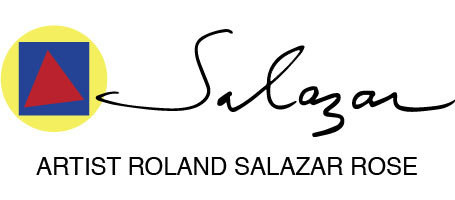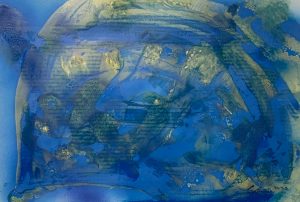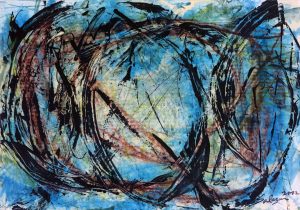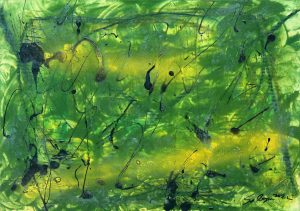ABSTRACTING the ABSTRACT
“Spaceship Earth”—“The Blue Marble”
“The Blue Marble” is a Mixed Media painting on Stonehenge paper, image 18 x 26, paper 22 x 30. Unframed, Priced at $2,500 (2022)
Mixed Media on Stonehenge paper, 18 x 26 image, 22 x 30 paper. (2022) Unframed Priced at $2,500
—————————————————————————————————————————————-
The images in this series have titles, although I don’t usually title my images; because with a suggestion made this way, the images titled may be understood only by the title I have used. I may number them, especially if they should display in the order I want them viewed and this way as a suggestion to you: a relationship to the text I have written on abstract art. I’m not showing all the images done in 2022; instead, I have a video of the first 14 I painted and these are shown in a video. See Abstracting the Abstract video here:
Mixed Media on Stonehenge paper, 18 x 26 image, 22 x 30 paper. (2022)
Unframed, Priced at $2,500
Abstract art uses visual language of shape, form, color and line to create a composition which may exist with a degree of independence from visual references in the world.[1]
Western art had been, from the Renaissance up to the middle of the 19th century, underpinned by the logic of perspective and an attempt to reproduce an illusion of visible reality. By the end of the 19th century many artists felt a need to create a new kind of art which would encompass the fundamental changes taking place in technology, science and philosophy. The sources from which individual artists drew their theoretical arguments were diverse, and reflected the social and intellectual preoccupations in all areas of Western culture at that time.[2]
Abstract art, non-figurative art, non-objective art, and non-representational art are all closely related terms. They have similar, but perhaps not identical, meanings.
Abstraction indicates a departure from reality in depiction of imagery in art. This departure from accurate representation can be slight, partial, or complete. Abstraction exists along a continuum. Even art that aims for verisimilitude of the highest degree can be said to be abstract, at least theoretically, since perfect representation is impossible. Artwork which takes liberties, e.g. altering color or form in ways that are conspicuous, can be said to be partially abstract. Total abstraction bears no trace of any reference to anything recognizable. In geometric abstraction, for instance, one is unlikely to find references to naturalistic entities. Figurative art and total abstraction are almost mutually exclusive. But figurative and representational (or realistic) art often contain partial abstraction.
Both geometric abstraction and lyrical abstraction are often totally abstract. Among the very numerous art movements that embody partial abstraction would be for instance fauvism in which color is conspicuously and deliberately altered vis-a-vis reality, and cubism, which alters the forms of the real-life entities depicted.[3][4] Source: Wikipedia
 Salazar
Salazar

